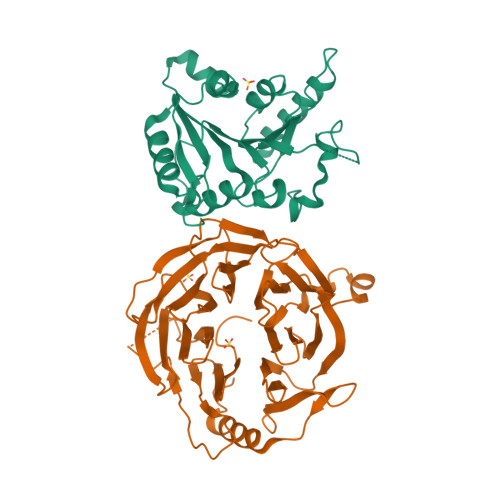Structural basis of regulated mG tRNA modification by METTL1-WDR4.
Publication Type:
Journal ArticleSource:
Nature, Volume 613, Issue 7943, p.391-397 (2023)Keywords:
Biocatalysis, Catalytic Domain, GTP-Binding Proteins, Humans, Methyltransferases, Phosphorylation, RNA Processing, Post-Transcriptional, RNA, Transfer, Substrate SpecificityAbstract:
<p>Chemical modifications of RNA have key roles in many biological processes. N-methylguanosine (mG) is required for integrity and stability of a large subset of tRNAs. The methyltransferase 1-WD repeat-containing protein 4 (METTL1-WDR4) complex is the methyltransferase that modifies G46 in the variable loop of certain tRNAs, and its dysregulation drives tumorigenesis in numerous cancer types. Mutations in WDR4 cause human developmental phenotypes including microcephaly. How METTL1-WDR4 modifies tRNA substrates and is regulated remains elusive. Here we show, through structural, biochemical and cellular studies of human METTL1-WDR4, that WDR4 serves as a scaffold for METTL1 and the tRNA T-arm. Upon tRNA binding, the αC region of METTL1 transforms into a helix, which together with the α6 helix secures both ends of the tRNA variable loop. Unexpectedly, we find that the predicted disordered N-terminal region of METTL1 is part of the catalytic pocket and essential for methyltransferase activity. Furthermore, we reveal that S27 phosphorylation in the METTL1 N-terminal region inhibits methyltransferase activity by locally disrupting the catalytic centre. Our results provide a molecular understanding of tRNA substrate recognition and phosphorylation-mediated regulation of METTL1-WDR4, and reveal the presumed disordered N-terminal region of METTL1 as a nexus of methyltransferase activity.</p>

